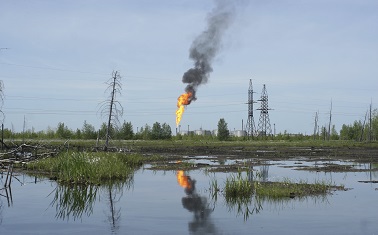Methane emissions from oil and natural gas systems continue falling. EPA, in an update to its Greenhouse Gas Reporting Program, says that methane emissions decreased from 77 million metric tons CO2 equivalent 2013 to 73 million metric tons CO2e last year. This continues a significant downward trend over the past few years:

The significance is this: Further reductions in methane emissions argue strongly against EPA’s position that additional regulation is needed. And, indeed, the agency is working on new layers of methane regulation.
Let’s think this one through. Methane emissions are falling under the current regulatory regime, yet EPA and its supporters say that further reductions won’t happen without more regulation. (If you feel like you’ve heard this argument before it’s because you have – see here and here on EPA’s ozone proposals.) But here’s what we know: Methane emissions associated with oil and natural gas systems are falling – at a time when natural gas production is dramatically increasing:

According to EPA and others, these two trend lines couldn’t go together. But they do, and it’s mostly the result of a couple of things: One is the steadily improving technology that’s being used in oil and natural gas development. The American energy revolution, which has come with increased use of safe hydraulic fracturing and advanced horizontal drilling, is by and large a technology-driven revolution. Second is the reality that natural gas producers are highly incentivized to reduce methane emissions so they can provide more product to consumers. Howard Feldman, API senior director of regulatory and scientific affairs earlier this year:
“U.S. producers continue to make dramatic improvements … These voluntary efforts will continue, as operators work to capture more gas and deliver it to consumers. Another layer of burdensome regulations will only interfere with that progress.”
While there’s lots of talk about improved air quality and environmental protection, industry is working to achieve both. Our companies are committed to the continuous improvement and safety of operations and systems. A big part of this is the slate of API hydraulic fracturing standards, developed from field experience and with the inputs of key stakeholders, that are making development safer and cleaner. Last week new editions of these standards were released that focus on stronger well integrity, groundwater protection and environmental safety – including air quality.
API RP 100-1 deals with onshore well construction and fracture stimulation design and execution:
- Well integrity that protects and isolates useable quality groundwater, delivers and executes a hydraulic fracture treatment and – contains and isolates the produced fluids.
- Fracture containment during the hydraulic fracturing phase, to contain the resulting fracture within a prescribed geologic interval.
API RP 100-2 applies to the planning and operation of wells, including hydraulically fractured wells. It includes provisions for environmental management, site selection, stimulation operations and more – most notably for the discussion here, air emissions. David Miller, API director of standards:
“Strong standards are key to America’s success as an energy leader, and that’s why we bring together regulators and operators to promote proven practices for environmental protection. This update provides the latest guidance on equipment, monitoring, storage, and installation. … Our voluntary standards serve as an important source of information for state regulators, who finalized an estimated 82 groundwater-related rules for oil and gas production, including hundreds of discrete rule changes, from 2009 to 2013 alone.”
Methane emissions are falling largely because industry is working to reduce them with technologies and modern, already well-regulated operations designed to safely capture product for consumers. The last thing EPA should do is mess with demonstrated success on methane. Tracee Bentley, executive director of the Colorado Petroleum Institute a field hearing on EPA’s proposed new methane regulations last month:
“We urge EPA not to get in the way of this success story by developing ‘one size fits all’ regulatory solutions. Our industry is big. It is complex. And operations vary substantially across the nation. … [W]e urge EPA to coordinate its efforts with other agencies to avoid implementing duplicative requirements that could potentially hinder the continued production of the energy that our nation will continue to demand.”
By Mark Green
Originally posted October 12, 2015
Energy Tomorrow is brought to you by the American Petroleum Institute (API), which is the only national trade association that represents all aspects of America’s oil and natural gas industry. Our more than 500 corporate members, from the largest major oil company to the smallest of independents, come from all segments of the industry. They are producers, refiners, suppliers, pipeline operators and marine transporters, as well as service and supply companies that support all segments of the industry

